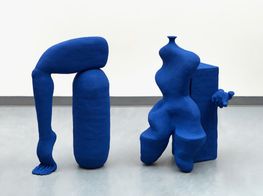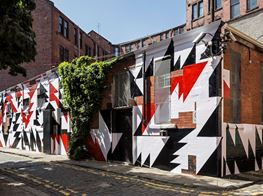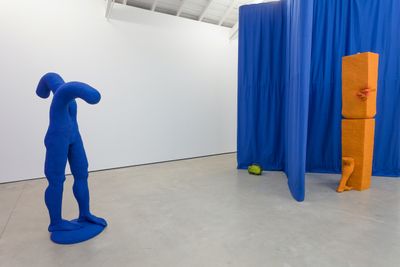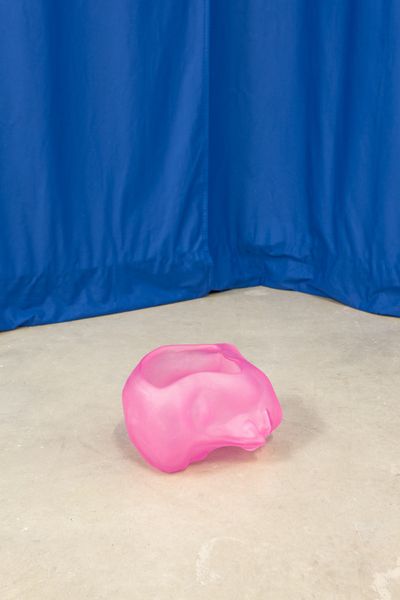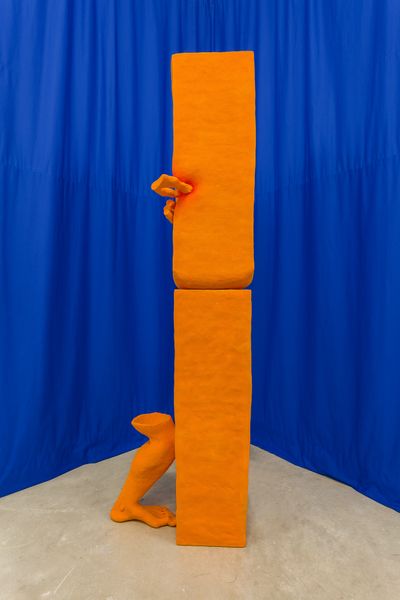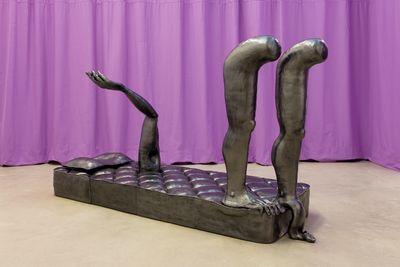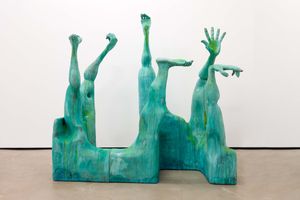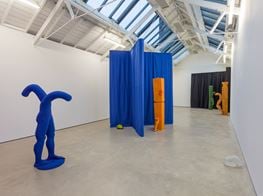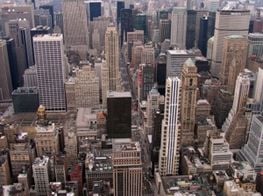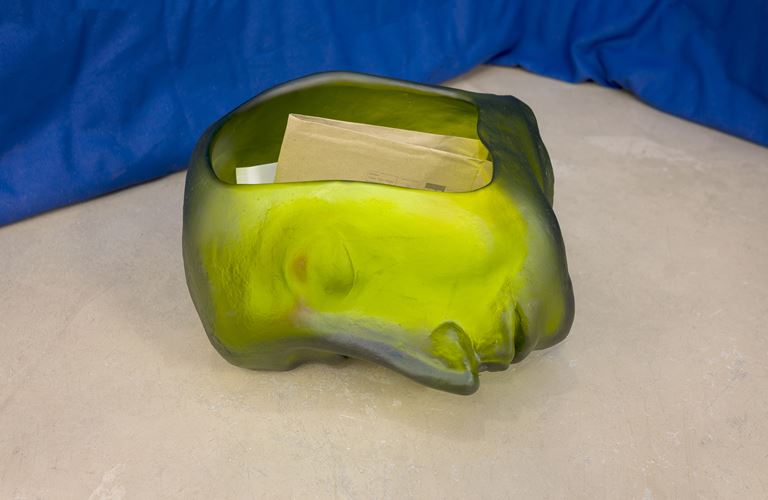
From his studio in New York, Jesse Wine discusses his intuitive approach to sculpture on the occasion of his debut solo exhibition with The Modern Institute in Glasgow.
You have been working with clay for a long time now. Has your approach changed at all, as you've become more familiar with the medium over the years? Or do you still embrace its unpredictable and fragile qualities?
Inevitably the approach and attachment to result shifts as you understand the material more. I get asked questions like this a lot—about unpredictability and fragility, and I can't help but think it's to do with the pigeonholing of clay within art.
I always wonder if painters get asked the same questions about paint. It's about the acceptance of a material and is probably related to the market as much as anything else. And it's such a catch-22, because I really don't want to have a conversation about art and craft!
Ultimately, I think that artists and maybe sculptors specifically look for 'their' material endlessly. In clay I have found a material that really fits with my way of working. There isn't anything about it that seems counterintuitive or forced.
Limbs and faces are often absorbed into solid forms or connected to objects or buildings in your works. There is a fluidity and playfulness to these combinations, but could you tell us a bit more about how they function for you conceptually?
Limbs have become the conceptual scaffolding of most of the things I make. Despite the many science-fiction predictions about what the world would look like in 2021, each and every human is housed in a body—it's a universal starting place.
I do occasionally use a head, but it is always separated from the body. In The Modern Institute show there are four glass heads, which lay on their side with eyes closed as if asleep.
'In clay I have found a material that really fits with my way of working. There isn't anything about it that seems counterintuitive or forced.'
There is an aperture in the cranium of each of these heads that you can look into. The interiors of the heads are filled with various things: sand, junk mail, a goldfish in water.
The idea is to see directly into the thoughts or dreams of the sleeper, and through the ethereality of the glass this sense of suspension is maintained.
In your recent show at SculptureCenter in New York, there is a work that looks almost resin-like, whilst others feel closer to bronze or rusty steel and some are more truthful to clay.
Is the surface and its transformative potential always at the forefront of your mind when you begin making a work, or does this just come into play instinctively after the form has emerged?
I am continuously playing with this idea that the work is not ceramic, as the material locates itself too quickly in the mind of the viewer. The object gives up its mystery very quickly.
What I want to do is prolong the confusion in the mind of the viewer, make them question the material and inspect the sculpture for a little bit longer. These extra few moments are what the sculpture needs to embed itself in the mind of the viewer.
I usually have an idea of the finish as I'm making the work, but sometimes a last-minute shift is really successful. I guess that's intuition kicking in, or maybe even the desire to keep it mysterious, even to me.
How have you found living and working in New York? Has the city or the current climate had much of an impact on your work?
Moving to the U.S. was really massive. I pushed my work in directions I would not have otherwise. I think I always wanted to be a figurative sculptor but didn't fully let myself for some stiff art school reasonings. When I came here, I only knew a handful of people and it provided the perfect opportunity to redefine what I made, especially to myself.
I also think that the scale of the work has increased. This sounds banal, but like the search and discovery of clay as a material I could work with indefinitely, scale has been a similar search and discovery.
The work is now maybe best described as oversized. What I love about this is how a limb appears approximately human size, but on closer inspection it somewhat dwarfs the human scale.
This happens quite slowly, as the viewer realises that they are much smaller than the thing they are encountering.
This is your first exhibition with The Modern Institute. Could you tell us about the work you have made for this show?
Along with the glass heads I mentioned earlier, there is a single mattress with a pillow. The pillow has an indentation in it as if someone was sleeping on it very recently. The use of the mattress is twofold: first, to make something plausibly soft out of a material that is rock hard.
The sensation of this in reality is quite spooky and creates the desire to touch the thing and test its materiality. Secondly, the work directly references Italian sculptor Gian Lorenzo Bernini.
I have included hard-copy references of other artists' work within my own: Brancusi columns, Hepworth holes, Morandi bottles... The idea is to provide context in the most active way possible, openly creating a dialogue between my work and these references. —[O]
Main image: Jesse Wine, Meantime (2021). Blown glass. 18 x 26 x 23 cm. Exhibition view: Jesse Wine, Carve a Hole in the rain for yer, The Modern Institute, Osborne Street, Glasgow (8 February–13 March 2020). Courtesy The Modern Institute. Photo: Patrick Jameson.
WORKS
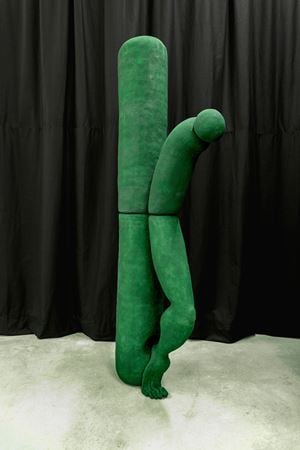
201 x 83 x 25 cm The Modern Institute
Request Price & Availability
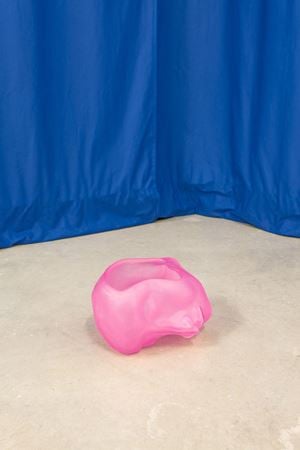
18 x 26 x 23 cm The Modern Institute
Request Price & Availability
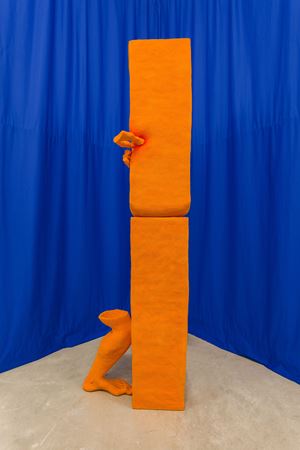
202 x 63 x 45 cm The Modern Institute
Request Price & Availability
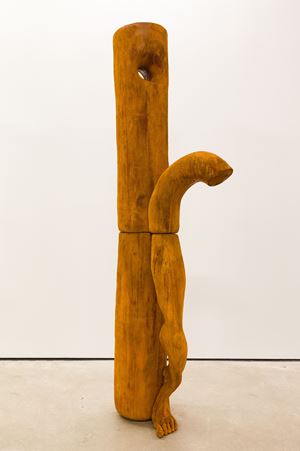
209 x 75 x 26 cm The Modern Institute
Request Price & Availability
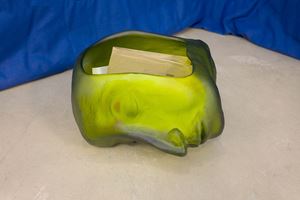
18 x 26 x 23 cm The Modern Institute
Request Price & Availability
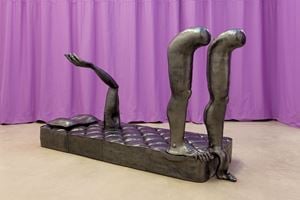
106 x 202 x 71 cm The Modern Institute
Request Price & Availability

